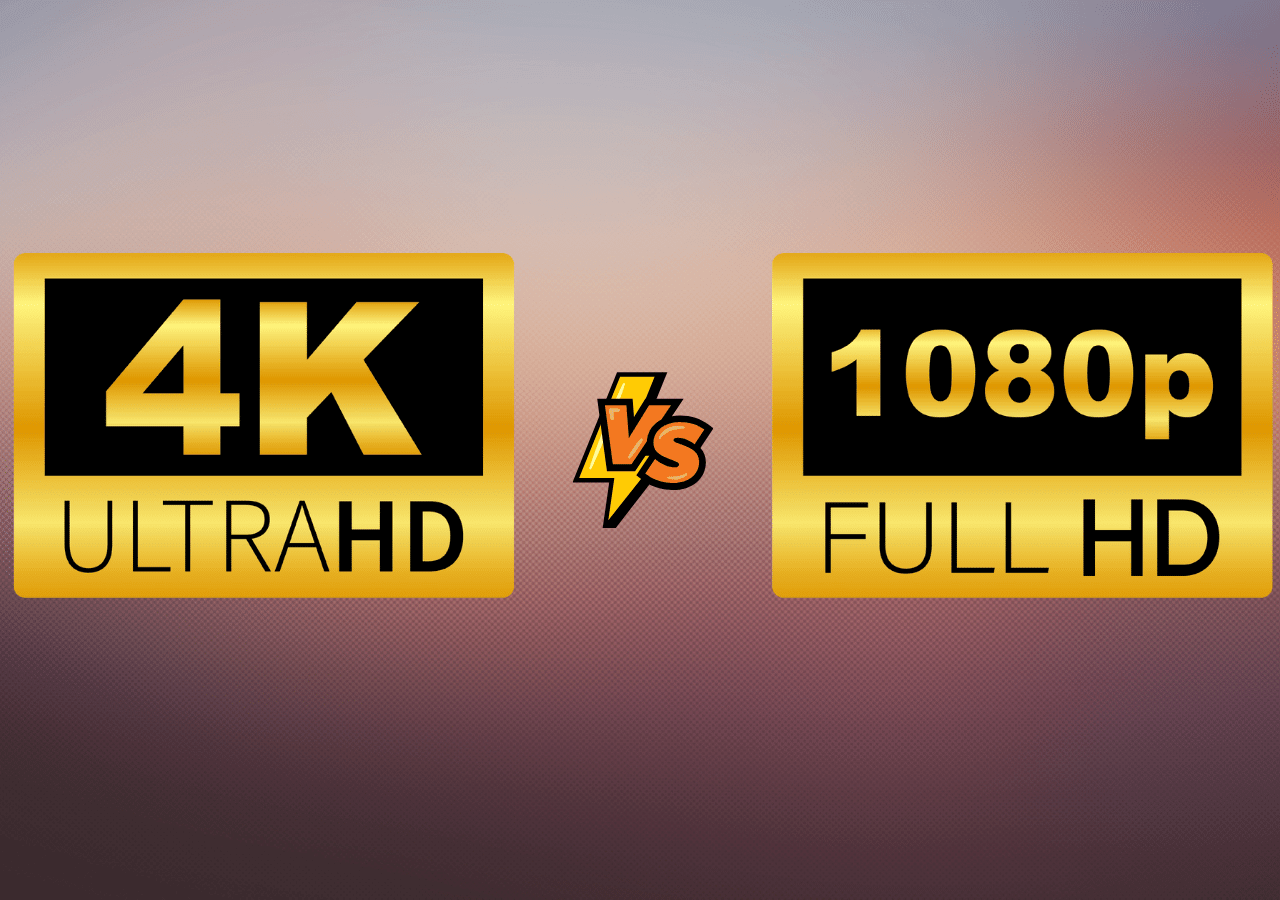- About
- Discover EaseUS
- Reviews & Awards
- License Agreement
- Privacy Policy
- Student Discount
Nowadays, when it comes to resolution, there is a wide range of options available on the market, like 1080P, 1440P, 4K, and more. Do you know their difference? Do you really know what 4K or 1080P is all about? If the answer is NO, just read on this page to find out all the answers!

What's 4K?
4K is a generic term that refers to a display resolution with approximately 4,000 horizontal pixels. There are several different 4K resolutions in digital television and digital cinematography. For the television and media area, 3840 x 2160 is the dominant 4K standard, also called 4K UHD. In the movie projection industry, it is usually the 4096 x 2160, called DCI 4K.
In our daily lives, we usually use the former one, which is also called UHD or 2160P. Now, 4K has become more popular in many video streaming services, consoles, and more, as it offers a more immersive and visually stunning experience.
Spread out this post to help others in need!
What's 1080P?
Like 4K (2160P), 1080P refers to a display resolution of 1920 x 1080 pixels, and people usually call it Full HD. It has over 2 million pixels in total. Here, the letter P indicates progressive scanning, meaning an entire image is transmitted simultaneously.
1080P is also widely used in our lives today. Many movies, TV shows, and videos are still available in this resolution because of the clear visuals and color accuracy.
Difference Between 4K and 1080P
Now that you have a rough knowledge of 4K and 1080P, let's explore their differences.
| Resolution | Vertical Pixels | Horizontal Pixels | Total Pixels | Names |
| 1080P | 1080 | 1920 | 2 million+ | Full HD, FHD |
| 4K | 2160 | 3840 | 8 million+ | UHD, Ultra HD, 2160P |
#1. Video Details and Clarity
4K has higher pixels than 1080P, which means it can offer a higher level of detail and clarity than the 1080P display. The increased pixel count allows for a more precise rendering of fine details, resulting in a more lifelike and immersive visual experience, such as in rendering hair and feathers.
So, if you want to create videos with incredible resolution and detail, 4K should be your first choice. However, suppose you only want to record screen with a screen recorder for online content, like YouTube, Facebook, or others. In that case, 1080P is enough, as it also can offer great detail and resolution.
#2. Content Availability
Now, 4K is becoming increasingly popular in the video and gaming industry. Many streaming services produce 4K video content, which could only produce a resolution of 1080P in the past.
In recent years, 1080P televisions have been challenging to find because 4K televisions are only manufactured in larger sizes, and you will likely be required to purchase a 1080P model if you want a small TV due to space constraints.
#3. Viewing Distance
Keeping a proper viewing distance is important to get a good watching experience. If you are sitting too far away from your television, you might be able to make out all of the finer details in the image.
So, for a 4K television, the optimal recommended viewing distance can be twice as close as a regular 1080P TV. Your watching experience is the best when sitting closer; sitting further back means you often won't experience its maximum benefits.
Final Thoughts
This post explains what 4K and 1080P is, as well as their difference. You can easily make your decision if you don't know which one to choose. Finally, don't forget to share this post with others who have the same problem!
Was This Page Helpful?
Jane is an experienced editor for EaseUS focused on tech blog writing. Familiar with all kinds of video editing and screen recording software on the market, she specializes in composing posts about recording and editing videos. All the topics she chooses
Related Articles
-
2024 Ultimate Guide to TikTok Video Size [All Is Essence]
 Jane Zhou/2024-05-24
Jane Zhou/2024-05-24 -
YouTube Picture in Picture [Know the Basics]
 Melissa Lee/2024-05-10
Melissa Lee/2024-05-10 -
Discord Nitro: What Is It & Is It Worth Trying?
 Jane Zhou/2024-05-10
Jane Zhou/2024-05-10 -
OnlyFans Banner Size/Dimensions [2024 Tips&Tricks]
 Jane Zhou/2024-05-24
Jane Zhou/2024-05-24